TIPS ON SWINE or HOG RAISING
Hog raising in the Philippines is a very popular enterprise such that there is a proliferation of backyard producers, which dominates the swine industry and a healthy viable commercial sector. Despite the crises facing the swine industry, still many people are venturing in this enterprise. This manual hopes to bring appropriate technology to the interested farmers and would-be swine producers in order that they may realize profitable production and improve their quality of life.
BREED OF SWINE
There are many imported breeds in the country today and its sometimes difficult to determine the best breed most suited to our conditions. Here is a guide to help you select the breed to raise depending on your purpose, money and experience.
YORKSHIRE OR LARGEWHITE
Yorkshire are entirely white with medium, erect ears. Sows have superior mothering ability, farrow and wean large litters and are excellent milkers. That adapt well to confinement but not to rugged conditions.
Slaughter animals yield a high dressing percentage, produce fine quality meat and compare favorably with other breeds in growth and economy of gains.
LANDRACE
Landrace are white, have short legs and medium to large drooping ears. The sows are noted for their excellence in mothering ability and litter size. They are heavy milkers and produce pigs with superior rate of growth and efficiency in feed utilization. When crossed with other breeds, they produce pigs of highly acceptable carcass quality. They are however, weak on the feet and legs and have problems adapting to rugged conditions. Such defects should be corrected by proper selection and breeding.
DUROC
The Duroc color is of varying shades of red. The sows are prolific and are good mothers. They produce pigs that are superior in growth rate, feed conversion, and their performance under rugged conditions is better than any of the white breeds.
HAMPSHIRE
Hampshires are black with a white belt around the shoulder and body. They are generally short legged and lack body thickness. The sows have a reputation of weaning a high percentage of the pigs farrowed and are able to adapt to very rugged conditions. The growth rate, however has generally been average or below.
BERKSHIRE
Berkshires are black with six white points – four white feet, some white in the face and tail. The ears are erect and inclined forward as the animal grows older. They are known for their style, meatiness and good adaptability to rugged conditions. They have desirable length, depth and balance of body but lack good growth and efficiency in converting feed to weigh gain. The sows are not as prolific as the other breeds.
PIETRAIN
The Pietrain is a very meaty type of pig with spotted black and white color. It has well-shaped hams, loin and shoulders. Ears are erect. The carcass has a high lean meat percentage, but it has a poor body constitution. Feed efficiency is not really good and they are a little bit slow grower. This breed is also highly susceptible to stress. Thus, Pietrain is only worthwhile in crosses but not as purebreeds.
Table 1. Characteristics of the Different Breeds of Pigs
|
BREED |
COLOR |
EARS |
TYPE |
COUNTRY OF ORIGIN |
OBSERVATIONS |
|
Landrace |
White |
Hanging |
Meat |
Denmark |
Long face, good mothers, weak legs, prolific |
|
Large white |
White |
Standing |
Meat |
England |
Fertile, high quality meat, fast grower |
|
Bershire |
Black w/ 6 white points |
Standing |
Meat |
USA |
Short, black skin, more resistant to diseases compared to white breeds |
|
Hampshire |
Black with white bands |
Standing |
Meat |
USA |
Short, good quality meat, strong legs |
|
Duroc Jersey |
Red (golden) |
2/3 erect 1/3 hanging |
Meat |
USA |
Good constitution, strong legs, fast grower, resistant to stress |
|
Pietrain |
Black & White |
Standing |
Very meaty |
Belgium |
Very meaty ham and loin, very susceptible to stress |
SELECTION CRITERIA
When selecting breeder sows on the basis of physical appearance, consider the following:
• The gilt should have well-developed udder with a minimum of six pairs of properly spaced function teats. A sow with poor udder development is likely to have poor milking capacity.
• Choose those which do not have inverted teats for such teats are inherited and do not secret milk.
• A long body is more desirably in sows because it provides more space for udder development.
• The body should have uniform width from front to rear.
• Good development of the ham, loin and shoulder is required of a breeding animal.
• Must have sound and well-placed feet and legs. Animals with medium short feet and short upright pasterns are preferable.
• Make it a point to select the biggest animals within a litter.
• Female breeders should come from a litter of eight or more good-sized piglets with high survivability.
• Do not keep gilts that come from sows in which agalactia ( failure to secrete milk ) have been observed.
• Select vigorous and hardly pigs from a healthy litter in a herd raised under good swine sanitation. Do not keep gilts or boars nor breed from litters that have physical abnormalities. These may be inherited.
• Most of the factors discussed in connection with a selection of gilt or sow also apply in the selection of a boar. However, the following pointers should also be considered:
• Masculinity, both in appearance and action, should predominate in the make-up of any boar.
• The primary sex organs should be clearly visible and well-develop.
Select only those boars whose testicles are of equal size.
• Select However, the best is to select a boar which has been proven and tested for boars with traits that can overcome the defects of the herd. Minor defects in the boar may be ignored provided that they are not present among the sows.
HOUSING
In Generally, boars should be four six months old at the time of selection. Whatever system of operation, hog houses must be constructed properly to ensure maximum performance of the pigs. A good hog house may not improved the health conditions of the animals but a poor one will certainly increase disease problem easily.
• For a small or backyard operations, cheap and locally available materials may be used such as bamboo and nipa.
• Hog houses should be constructed on a slightly sloping and well-drained area so that it will not become too muddy and convenient to work in.
• Permanent hog houses should have concrete floors for easy cleaning and to minimize the occurrence of parasites and diseases. Concrete floors must not be too rough to cause foot and leg problems nor too smooth to be slippery when wet.
FACILITIES AND EQUIPMENT
• Provide the pig house with the proper equipment such as feeders and drinking troughs. Feeders and water troughs are best made of concrete although other materials may be used. Some people use discarded automobile or truck tires cut in halves.
Table 2. Space requirements for Different Classes of Swine*
TYPE OF HOUSE |
BOAR |
BEFORE FARROWING SOW |
GILTS |
SOW WITH LITTER |
|
| Young | Mature | ||||
| Farrowing house: | |||||
| Pen size (min) m2 | 1.858 | 1.858 | 1.580 | 4.460 | 5.948 |
| Stall size (total) m2 | – | – | – | 3.903 | 3.903 |
| Stall width, cm. | – | – | 50.8 | 60.96 | |
| Growing-finishing | |||||
| House: | |||||
| Solid floor (total)m2 | – | – | – | – | – |
| Pigs per watering | |||||
| Cup (hole) | 1 | 10 | 12 | 4 | 4 |
| Pigs per feederhole | 1 | 2 | 3 | 1 | 1 |
TYPE OF HOUSE |
GROWING-FINISHING PIGS |
||||
| 10-20 kg | 20-40 kg | 40-70 kg | 70-100 kg | ||
| Farrowing house: | |||||
| Pen size (min) m2 |
– | – | – | – | |
| Stall size (total) m2 |
– | – | – | – | |
| Stall width, cm. |
– | – | – | – | |
| Growing-finishing | |||||
| House: | |||||
| Solid floor (total)m2 | .46-.56 | .56-.74 | .74-.84 | .84-1.11 | |
| Pigs per watering | |||||
| Cup (hole) | 20 – 25 | 20 – 25 | 20 – 25 | 20 – 25 | |
| Pigs per feeder hole |
4 | 3 | 3 | 3 | |
• In bigger operations, farrowing stalls are important to reduce piglet mortality due to crushing of piglets.
• Heat lamps or electric brooders are needed for survival of newborns pigs. In places where the use of heat lamps is not possible, a box lined with old sacks or thickly bedded straw, rice hull or saw dust can keep the pigs warm and comfortable.
BREEDING MANAGEMENT
Most gilts of the improved breeds reach the age of puberty at about six to eight months of age but they should not be bred until they are eight months of age or are weighing about 90 to 100 kg.
CARE AND MANAGEMENT OF THE SOW
• Regulate the feed intake of gilts or sows immediately after breeding to prevent them from becoming too fat. Obesity of pregnant sows may result to a fewer number of pigs farrowed. Also, they may suffer from farrowing complications.
• Keep the pregnant sow in an environment ideal for better conception. Sprinkle water on the sows when the weather is too hot or whenever necessary.
• To avoid constipation, provided a healthy but a laxative ration. Provide plenty of water and newly harvested green feeds such as camote vines, kangkong, Paragrass and water lily.
• Deworm sows and gilts against internal parasites and treat external parasites 14 days before expected date of farrowing.
• In commercial operations, the sow should be transfered to the farrowing house one week before expected date of farrowing.
• On the average, a sow will farrow in 114 days after a successful mating. The usual range is 109-119 days. Watch out for the following signs:
- The abdomen
- The sow becomes restless and nervous
- the vulva is swollen with possible mucus discharge
- milk is present in the teats if pressed
• Attend to the sow during birth because this is the most crucial time in the life of the new born piglets.
• Full-feed the sow or gilt with a high energy ration for about two weeks before mating to ensure maximum ovulation rate.
• Observe proper time of mating to ensure maximum litter size. A sow is in heat if she exhibits one or more of the following symptoms:
- swelling and reddening of the vulva
- mucous discharge from the vulva
- restlessness and grunts frequently
- mounting other pigs
- frequent urination
- cocks her ears frequently
• Mate each gilt or sow twice to the same boar in one heat period with an interval of 12 to 25 hours.
• A boar-to-sow ration of 1:25 – 30 is generally recommended.
CARE OF THE BOAR
• In commercial operations, a new boar should always be checked for fertility and diseases associated with abortion and birth of dead pigs.
• Regulate the breeding load of a boar.
Recommended breeding load of boars at different ages:
|
Ages, months |
No. of Services per week |
|
7 or less 8-10 11 12 18 and over |
None 1 or every 5-10 days 1 or every 4 days 2 or every 3 days 3-7 or every other day |
CARE AND MANAGEMENT OF PIGMENTS AT FARROWING TIME
• Prepare farrowing materials and equipment before farrowing dates.
• Using a clean dry cloth, wipe the mucous membrane and other birth material from the mouth and nose of new born pigs. Assist the piglet in breathing by swinging its head down or slapping it for a few seconds.
• Tie string around umbilical cord two inches from the base and cut with a sharp pair of surgical scissors. Do not pull the cord away from the body while cutting so as not to cause hernia. Dip injured tip of cord into bottle of tincture of iodine.
• Place piglets in piglet box underneath a heater. Whenever necessary, a 100- watt bulb after 14 days of brooding.
• Cut the needle teeth. This is done by holding the pig firmly by one hand with three fingers supporting the jaw and the thumb pressing against the back of the neck. Insert the forefinger to one side of the mouth just behind the needle teeth reaching for the tip of the tongue. With a side-cutting nipper or ordinary nail cutter cut close to the gum level. Do not make a slanted cut or leave jagged edges for these are likely to cause injuries to the gums and tongue of the piglet and teats of the mother. Clean and disinfect nipper before working with another piglet.
• Let the piglets suck the first milk (colostrum). Colostrum contains antibodies needed by the baby pigs to fight against diseases during the early life.
• Iron reserves in the body of a newborn piglet is consumed in a week’s time. Injection of commercial iron dextran is necessary to prevent piglet or newborn anemia. Repeat administration 14 days after birth or a soon as symptoms are detected.
• Wean piglets at four to six weeks of age. When weaning is done earlier than 56 days, a sow can farrow from four to five times in two years since sows usually come in heat from three to seven days after weaning. The proper procedure in weaning is to remove the sow, leaving the piglets in familiar surroundings. It is also important that all other routinary management practices like deworming, castration, and ear notching or tattooing are carried out before weaning.
CARE AND MANAGEMENT OF GROWING – FINISHING PIGS
• Management requirements are less demanding, nevertheless they must be provided with ample protection against pests and diseases and fed in accordance with their requirements.
• Deworm pigs one or two weeks after weaning.
• Vaccinate pigs one or two weeks after weaning or one week after deworming.
• Sell or butcher pigs when they reach profitable market size of at least 80 kilogram. Slow -growing pigs despite good feeding and management should be disposed immediately. Keeping them longer is uneconomical.
• It is important to know information on the prevailing market prices of pork. It is also important to know the exact weights of the live animals and sell the pigs on weight basis.
OTHER ROUTINE MANAGEMENT PRACTICES
• In backyard operations, identification of pigs is done through outstanding marks on the hair coat. In commercial farms, identification is through ear notching and tattooing.
• Castration or the removal of the primary sex organ of the male is best done on pigs about two weeks of age or earlier. This is done to improve the meat quality and to prevent the perpetuation of undesirable individuals. Consider the condition of the male animal and the surroundings environment when castrating.
FEEDING MANAGEMENT
• If the milk supply of the sow is inadequate to feed her piglets, supplement her with a good creep ration. Use a milk replacer. Choose many available brands.
• Begin feeding a commercial good pre-starter ration when the pigs are about one week of age.
• The ration of the pigs should be changed at different stages of growth but the shift from one ration to another should be done gradually in order not to upset the normal feeding behavior of the pigs. Always allow a transition period of at least one week before making changes.
• A starter ration is given to pigs from weaning until two months of age and weighting about 10 to 25 kilograms.
• The grower ration is next given to pigs when they are 30 to 35 kgs. or two months old until they are about 15 to 20 weeks old.
• When pigs reach 60 kg. or are about 20 weeks old, a finisher ration is given.
• In formulating a simplified ration, keep in mind that it should always contain sufficient energy, protein as well as adequate amounts of vitamins and minerals.
• Cassava, camote, corn, and corn by-products and discard from slaughterhouses, which are abundant in some parts of the country may be used provided they are properly cooked and dried.
• Dry feeding is practiced in commercial operations for reasons of economy in labor and in feeding equipment. Wet feeding is mostly practiced by backyard producers.
• Provide clean drinking water at all times.
Presented herein are sample rations for the different classes of swine.
Sample 1 – Daily Feed Requirements for 10 piglets from 7 kg. to 10 kg.
|
Feed Ingredients |
Amount |
|
Yellow corn Rice bran Copra meal Fish meal Soybean oil meal Skimmed milk Ipil-ipil leaf meal Brown sugar Vitamins-minerals TOTAL |
0.9 kg. or 900 g. 0.1 kg. or 100 g. 0.1 kg. or 100 g. 0.1 kg. or 100 g. 0.5 kg. or 500 g. 0.1 kg. or 100 g. 0.1 kg. or 100 g. 0.1 kg. or 100 g. 0.1 kg. or 100 g. 2.1 kg |
Sample 2 – Daily Feed Allowance for 5 pigs weighing 10 kg. up to 30 kg. or 2 ½ to 3 months old.
|
Feed Ingredients |
Amount |
|
Yellow corn Rice bran Copra meal Fish meal Soybean oil meal |
3.0 kg. 1.2 kg. 0.7 kg. 0.3 kg. 0.9 kg. |
|
Skimmed milk Ipil-ipil leaf meal Brown sugar Oyster shell powder Salt Vitamins-mineral TOTAL |
0.1 kg. 0.2 kg. 0.1kg. 1.9 kg. 9.0 kg. 30.0 kg. 8.44 kg. |
Sample 3 – Daily Feed Allowance for 5 pigs weighing 25 kg. up to 65 kg. or 2.5 to 3 months up to 5 to 6 months old.
|
Feed Ingredients |
Amount |
|
Yellow corn Rice bran Copra meal Fish meal Soybean oil meal Ipil-ipil leaf meal Oyster shell powder Salt Vitamins-mineral TOTAL |
3.6 kg. 0.4 kg. 2.0 kg. 2.0 kg. 0.4 kg. 0.6 kg. 28.0 g. 40.0 g. 47.0 g. 9.6 kg. |
Sample 4- Daily Feed Allowance for 5 pigs weighing 60 to 65 kg. to market weight of 90 to 100 kg.
|
Feed Ingredients |
Amount |
|
Yellow corn Corn cobs Rice bran Copra meal Fish meal Ipil-ipil leaf meal Oyster shell powder Salt |
4.6 kg. 1.1 kg. 3.6 kg. 3.0 kg. 0.2 kg. 0.7 kg. 60.0 g. 60.0 g. |
Table 3. Daily Feed Intake
|
Age of Pigs (weeks) |
Liveweight (kg.) |
Daily Feed Intake (kg.) |
|
10-12 12-13 13-15 16 17 18 19 20 21 22 23 24 25 26 27 28 |
20-25 25-30 30-35 35-40 40-45 45-50 50-55 55-60 60-65 65-70 70-75 75-80 80-85 85-90 90-95 95-100 |
Up to 1.2 1.2 – 1.4 1.3 – 1.6 1.4 – 1.8 1.5 – 1.9 1.6 – 2.0 2.0 – 2.1 2.1 – 2.2 2.2 – 2.3 2.3 – 2.4 2.4 – 2.5 2.5 – 2.6 2.6 – 2.7 2.7 – 2.8 2.8 – 2.9 2.9 – 3.0 |
RECORD KEEPING
Record keeping must be simple and precise. This can be used as a guide for improvements or adjustments to be done. This will also be helpful in the day to day operation. Through record keeping, profitability can be easily determined.
The kind of record that we keep depends on the particular aspect of swine enterprise that we want to emphasize.
Type of Records Kept
• Technical – records regarding production and schedule in the farm.
Example: age of the sow, farrowing date, number of piglets
• Economics – records regarding the financial aspect of the operation.
Example: price of meat, price of weanlings, price of feeds
Table 4. Example of a Record
SALES/DISPERSAL OF PIGLETS
MARKETING
Marketing is the best last job done on growing – finishing pigs. Hogs are marketed when reach at least 80 kg.
Marketable hogs may be sold to middlemen who usually act as buying or selling agents, direct to meat processors without the intervention of a middleman, or in auction markets where animals are sold to the buyers who offers the highest acceptable price per kilo liveweight or per head.
When a large number of hogs are to be marketed, the producer must observe proper shipment and transport handling to minimize losses due to shrinkage, bruises, injuries and possible deaths. Here are some tips:
• When transporting hogs, separate the large animals from small pigs by a partition.
• Provide loading facilities for easier and proper loading of pigs.
• If necessary provide beddings of sand or saw dust. When the weather is hot, wet down the beddings before loading to keep the pigs cool and comfortable.
• Do not overload nor underload the truck.
• Do not excite or over-heat hogs. Give the hogs enough rest and leave them undisturbed until they are butchered.
• Do not overfeed hogs before transport to avoid suffocation or vomiting.
HEALTH MANAGEMENT
• Keep buildings, run-ways, pens and equipment clean always. Sanitize and disinfect them regularly.
• Quarantine or isolate animals recently brought from other sources.
• When buying breeder stocks for replacement, make certain that the animals have been immunized against prevalent diseases in the area such as hog cholera and swine plague.
• Always seek the advice/services of the nearest veterinarian and /or government technician or the office of the Bureau of Animal Industry.
COMMON DISEASES AND PARASITES
Hog Cholera or Swine Fever
Pigs get contaminated through direct contact or by eating uncooked slops or kitchen scraps containing the virus.
SIGNS * Fever, loss of appetite
* Increased thirst, chills and sometimes vomiting
* Constipation, later followed by diarrhea
* Inflammation of the eye (conjunctivitis) thick
discharges causing eyelids to stick together
* Reddish, purple discoloration of skin at ears,
abdomen, inner thighs or tail
* Death ensues 4-7 days after onset of signs
* Prolonged duration of illness (chronic form)
terminates in pneumonia or hemorhagic enteritis, or
both
PREVENTION AND CONTROL
* Vaccinate all pigs against the disease using a
reliable vaccine, weaning at one week before or
after weaning; sows and boars, every six months.
* Dispose all pigs known to have the disease.
Disinfect contaminated pens and premises properly.
* Avoid giving uncooked slops or kitchen scraps to
pigs which are common sources of infection.
SWINE DYSENTERY
SIGNS * Loss of appetite
* Fever
* Rough coat and weakness
* Watery feces flecked with mucus or blood
PREVENTION AND
TREATMENT * Antibiotics in feed for two weeks when disease is
prevalent
* Quarantine new arrivals for a week and feed high
level antibiotics
PNEUMONIA-DISEASE COMPLEX
SIGNS
* Coughing
* Eye and nasal discharge
* Difficult breathing (abdominal nature)
* Chilling
* Muscular cramps
* Sneezing
Pneumonia symptoms are associated with the following conditions:
* Swine Plague – usually a complication of swine flu.
* Enzootic Pneumonia – impaired growth and feed conver-
sion rates for long time with frequent attacks of persistent
dry cough.
* Swine Flu – exposure to stress, particularly cold and incle-
ment weather; poor drafty environment also favors chilling
of susceptible pigs.
* Athropic Rhinitis – lateral distortion of nose, excessive
sneezing of even week-old piglets.
PREVENTION
 Improve management and emphasize dry, clean, draft-free and
well- ventilated housing.
 Avoid overcrowding, as most respiratory disease are transmitted by inhalation of infected air particles.
 Provide plenty of clean, fresh water, nutritious feed and vitamin-antibiotic feed supplement.
TREATMENT
* There is no specific treatment for swine flu, swine plague and
enzootic pneumonia. However, antibiotics like tetracyclines and
sulfas may be of benefit. Respiratory stimulants and antiseptics
as well as good nursing care speed up recovery.
For Atrophic Rhinitis, the following therapeutic approach is recommended:
 Sulfamethazine in feeds.
 Sulfathiazole in water – 1/3 to ½ gram per gallon.
BRUCELLOSIS OF PIGS OR CONTAGIOUS ABORTION
CAUSE Brucella suis
HISTORY * Abortion when sow is at second or third moth of pregnancy.
 Irregular heat cycles, presence of repeat breeders,
 Still births
SIGNS * Aborted fetus
 Small litters or weak piglets
 May or may not have metritis
 Localization of agent in joint causes in coordination, paralysis and lameness.
 Not necessarily fatal unless complicated by metritis
 Localization of agent in joint causes in coordination, paralysis and lameness.
 Not necessarily fatal unless complicated by metritis
PREVENTION
 High incidence of the disease necessitates replacement of entire herd and restocking after 6-8 months.
 Apply strict hygienic measures on farm.
 Purchase breeding animals from certified negative herds.
 As there is no satisfactory vaccine or treatment, the practical approach is to test and dispose of positive cases.
SCOURING (DIARRHEA) OR GASTROENTERITIS COMPLEX
CAUSE Irritation of the small intestine by parasites, bacteria, or by sudden
change of diet. It is caused by various carriers or conditions:
 Dietary Scours- brought about by sudden change in feed or irregular feeding.
 Colibacillosis – from contaminated water supply, change in feed which upsets balance of bacteria in intestines, and stress factors like weaning, vaccination, transfer to other pens.
 TGE – due to introduction of new pigs, some may be carriers of the virus; mixing animals of different ages.
 Balantidiosis – usually brought about by contaminated drinking water and/or contaminated forage such as kangkong.
 Dysentery – associated with any form stress like transport or change of feed, feeding of contaminated kitchen slops.
 Gastro-intestinal Parasites – overcrowding of animals, lack of deworming program.
 Dehydration is the biggest problem and can cause death in most cases; it must be immediately corrected by giving fluids. Effective treatment and control depend on correct diagnosis or identification of cause. This is quite difficult because of the complicated nature of the disease, so it is best to consult a veterinarian for confirmation of diagnosis. Emphasize preventive aspects of management, as treatment is both difficult and expensive.
MMA (MASTITIS – METRITIS – AGALACTIA SYNDROME)
CAUSE Mastitis and agalactia (absence or lack of milk) arise from non-specific or unknown causes. It may be due to infection or stresses like excitement, difficult farrowing, digestive trouble of dietary origin and other environmental factors. Metritis is a non-specific inflammation of the uterus and is associated with retained placenta, abortion or difficult delivery (dystocia).
SIGNS
* Temperature above or below normal
 Discharge of reddish brown mucus mixed with shreds of placental membranes that attract flies.
 Tenderness and warmth in mammary tissue.
PREVENTION * Check health status of breeding sows. Replace those with
history of breeding troubles.
 Proper diet, exercise, and provision of clean, disinfected farrowing pens reduce incidence of farrowing troubles.
 Mild, light laxative feed for sow is recommended after farrowing.
 Eliminate stresses and possible causes of under injuries.
TREATMENT * Antibiotic infusion into udder; apply hot compress and
mild antiseptic externally.
* Administer pituitary extract containing oxytoxin.
* Treat metritis locally by inserting pessaries or antibiotics
inside uterus and systematically by injection of sulfa
drugs and other antibiotics.
ROUNDWORM INFECTION
CAUSE
* Large round worm (Ascaris lumbricoides)
SIGNS
* Depends largely on the number of worms present in
animals, kind of management and nutrition of pigs. Pigs
manifest slow growth rate, thinness, thick growth of hair
which is usually dull and lacking normal luster. Sometimes,
pigs vomit worms or expel worms in the feces.
TREATMENT
* Oral administration of dewormer through feed or drinking
water. Piperazine dewormers are usually effective.
MANGE
CAUSE
* Direct contact with affected animal or contaminated
objects and farm equipment.
SIGNS
* Intense itchiness, forcing animal to rub vigorously affected
portion of the body against wall of pen. At first, affected
skin is reddened but, after sometime, skin becomes
thickened, scaly, and wrinkled.
TREATMENT
* Spray animal with insecticidal preparations indicated for
mange. Repeated spraying is necessary to attain satis-
faction results. Likewise, spray animal’s quarters parti-
cularly floors and walls to kill mites hiding in cracks and
crevices.
INPUTS IN PRODUCTION
A. BACKYARD OPERATION
1. INVESTMENTS
a. A livable hog house with concrete floor
b. Purchase of seed stock or foundation anima
2. OPERATING EXPENSES
a. Feeds
b. Veterinary medicines, vaccines, feed supplements
c. Livestock insurance – a/
B. COMMERCIAL/LARGE SCALE OPERATION
1. FIXED INVESTMENTS
a. Hog houses
Farrowing house/stall
Gilt/Dry/Gestating house
Boar house (may be omitted if A.I. is to be used)
Weanling house
Growing/Fattening house
Isolation house
b. Equipment
Water pump
Electrical connections
a/ Optional for private operations but required of dispersal recipients
Hammherwill – b/
Feed mixer – b/
Hog scale – portable units or tape measure
Other farm tools
Spade and spading fork
Wheel barrow and rake
1. PURCHASE OF STOCK
Gilts/ Sows
Boars
2. OPERATING EXPENSES
Hog Feeds
Veterinary medicines, drugs, vaccines, feed supplements
Labor
Repair and maintenance of buildings
Maintenance of Machinery and Equipment
GLOSSARY
To better understand the terms contained in the context, a glossary of technical terms is given meaning in the national language:
- age of puberty – edad ng baboy na maari ng palahian o maglahi
- body thickness – malaki ang pangangatawan; mataba at malaman ang katawan
- carcass quality – uri ng karne
- castration – pagkapon ng lalaking baboy
- conception – pagbubuntis
- constipation – hirap sa pagdumi
- ear notching – uri ng pagmarka o palantadaan sa baboy sa pamamagitan ng pagpilas sa parte ng dalawang tainga
b/ Optional, would depend on degree of operation
- economy of gains – malaking tubo sa kaunting pinuhunan
- farrowing – panganganak ng inahing baboy
- feed convertion – tumutukoy sa kakayahan ng baboy na ipalit ang isang kilong pagkain sa karagdagang timbang.
- fertility – kakayahang mag-anak
- functional teats – magandang tubo ng utong na may kakayahang magpagatas
- gilt – dumalaga; hindi pa nanganganak na babaing baboy
- inverted teats – papaloob na tubo ng utong
- litter size – bilang ng biik sa isang anakan
- mothering ability – nagtutukoy sa katangian ng inahin na mag- alaga sa kanilang mga anak
- pastern – parte sa paa ng baboy; sakong
- prolificacy – katangian ng inahin na nagtutukoy sa dami at bilis ng pag-anak; palaanak
- sloping – patagilid; pababa
- still birth – patay ng isilang na biik
- slops/kitchen scraps – kaning-baboy mula sa mga labi sa kusina
- tattooing – pagmarka o paglagay ng numero sa tainga ng baboy sa pamamagitan ng pagtatato
- therapeutic – pagbibigay ng karapat-dapat na gamot para sa sakit na dumapo sa hayop.
- udder – suso ng hayop na babae
- umbilical cord – pusod
- weaning cord – pagwalay ng inahin sa mga biik
- weanling – biik na naawat
REFERENCES
Swine Farming Manual by Melanio by Melanio G. Supnet and Oscar Gatmaitan
Pagbababuyan sa Likod Bahay – an LDC Publication
AgriScope Agribusiness Opportunities
Valente Villegas Book on Swine Raising
Basic Pig Keeping Manual – ITCPH
Overall source: Dept. of Agriculture Website
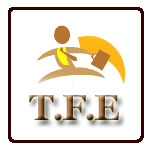
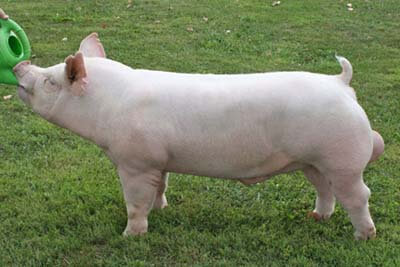
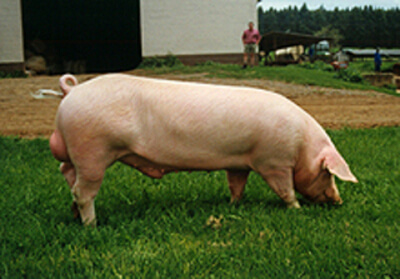
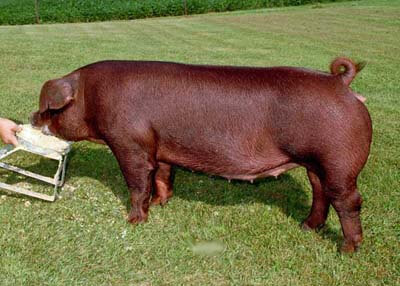
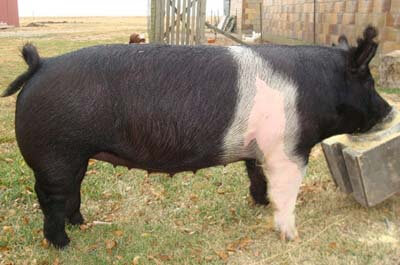
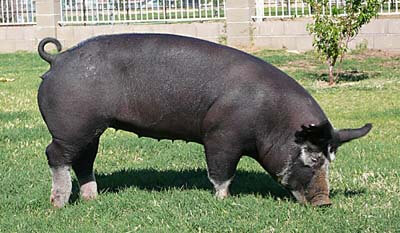
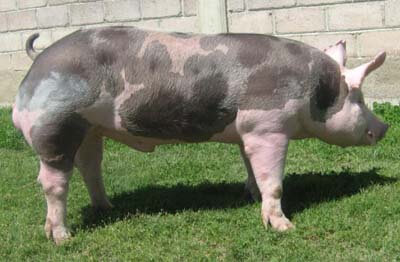



Hi po, ano po ba ang kailangang iinject o ipainom sa inahing baboy para magka anak ulit. 3 months na po Kasi since nung nanganak sya. Sayang na po kasi ung pinapakain namin Hindi parin nag swell ung vulva nya.
hello,meron po ba nakakaalam kung saan pueding makakuha ng Berkshire semen?maraming salamat po.
We want to rganize a livestock raisers association in Marinduque and we are asking assistance from those who knopw how to do it for baclyard growers (binabarat po kasi ang mga backyard growers.
Good day, I am a single mother of two kids. Since my husband pass away i am looking for a way to earn additional income to sustain our needs. And i am interested in piggery but i need guidance as well as knowledge to prosper in this venture. I hope you can help me. With my project in the aspect of planning, financing, techniques to make my business profitable. Thank you.
@FAITH IRENEO
Hi, it’s best to take a training or seminar. TRC (Technology Resource Center) can help you with the training. They have a scheduled seminar this month on Swine Production and Management.
ask ko lng po kung pwede ko kumuha ng gagawing inahin sa anak ng baboy ko na unang panganak pa lng,largewhite po sya na na cross sa duroc,magkaroon po kaya ito ng magandang resulta?salamat po
rhose
May lagnat ang inyong inahin at sobrang hirap sa panganganak masyadong matagal ang interval nito, dapat nagbigay kayo ng oxytocin para mabilis manganak..
ngayon magbigay kayo ng antibiotic sa inyong inahin for 3 days.
..i need help po..just started our backyard piggery..nanganak po ung inahin last friday. nag start 3pm natapos mga 12mn.. may 12 biik po cya. simula manganak po ang inahin ayaw pa po kumain ng inahin til this time. what po dapat gawin?pls help me po. tnx.
ask lng po.pwedi po ba limestone halo pagkain ng baboy na malapit ng ibenta?
types at form nag business sa pig raising
actually i am a animal care technician of excel feeds…everyday routine ko po ay mamasayal s mga backyard raisers para mainject ng mga antibiotics,vitamins,dewormer atbp..pati castration..kya po huhingi aq ng guidelines pr makaorganize aq ng hog raisers assn d2 s amin s Maddela,Quirino Province..region 2..salamat po..
Pls help me because i am planning to organize a hog raiser association in our municipality to help them to market their fattening,,can u help me to get a by-laws or rules and regulation..tnx pls contact me asap..09159072730/09493582457..
I am planning a piggery in Visayas,to start with 6 sows and a boar.pls kindly advise me on how to go about.I also need a business plan and tips on financial management of piggery.thanks.
@ phetrone
san location mo… available n ba piglets mo, anu breed nyan?
Edward..
If you have F1 sow (Landrace x Largewhite) cross it with Duroc Boar, for marketing or growout pig purposes.
Friend us on facebook
[email protected]
Hi,
Anu ba ang the best breed ng baboy? Which madaling lumaki at mabigat sa timbang?
Good day. How much do I need to start this kind of business?
I am interested in starting a small piggery in Bohol, where can I get manuels/books on this subject…including info on breeds, housing, feed, medicines, etc.
i have 17 sow already pregnant delivery date is july and august i want to sell it rush because i really need money…
to those who are interested pls contact me 09152571771
friend us on facebook laguna piglets
i see… thanks much jay for the info, its reli a big help! : )
rache good day.. para maiwasan ang ganyan incidence dapat naka farrowing pens ang inahin.
hi! tanong ko lang kung normal sa casualties ng biik yung madaganan ng nanay? pano ba to maiiwasan? pls help…
hi,ano po ang tawag sa tagalog ng largewhite? thanks
pls send to my email add about guide in hog raising.tnx alot!!!
michelle
available pa ba piglets nyo?
good day,
i am also planning to start small pig farm, can you give me an estimate of how much will it cost including the feeds and other facilities? thank you
tnx.
TNX for the INFO…. We have 45 duroc/pietrain piglets for sale at our Batangas Farm. If you are interested, you can call us at 09302136312…
would like to know where in the Philippines i can buy hog vaccines and dewormer from? any assistance would be appreciated
good day,
i am also planning to start small pig farm, can you give me an estimate of how much will it cost if i start for about two dozen of pigs? including the feeds and other facilities? thank you
andre bautista
Hi, I am planning on starting a small scale pig farm in Bohol. Can you give me an estimate on start up price for a farm housing 30 Duroc piglets. Where can I purchase piglets? Are Pietrain worth the added bother to raise.
Regards
Doug
Hi, Im planning to start a piggery business here in Cavite early next year. Can you please send me a manual on how to start this kind of business. I want to know the initial amount needed in case I will be starttng with 20 piglets. Please include the list of expenses like the feeds, vitamins and the cost of constructing the house for the pigs. I also need your advice on where can I avail the best breeds. Please help me. Thank you and more power…
pwd maka hingi ng favor?hihingi sana po ako ng mga common na sakit ng biik,espicailly sa kulay ng mga dumi ng biik,sa pagtatae………..kasi po ano ano na po ang ginagamit kng bakuna e nagtatae parin…..it will be heald in one day babalik na naman ulit…………………..hope matulungan nyo po ako sa problemang ito po………………….god bless……………………
@vincent
For the meantime you can research the internet regarding the common hog diseases. You will be surprise that there are a wealth of information regarding that topic. Just type in Google search the term “common hog diseases and cure”.
more….. more….
Hi…. Am thinking of starting a small backyard piggery( 3 sows) on my return to the Phillipines. When I was last living in the Philippines i got interested in fattening piglets I had purchased and enjoyed the expierence. Being and Australian are feed providers willing to help with Veterinary services. I am planing to live in a Cebu province and want to have the piggery as a hobby. Will look into other sorces of food like goat and possibly cows but all on a very small scales.
Keeping their areas clean of debris and disease, giving them good feed and good sturdy shelter.
This is great!!!
this site ………………………… realy me gives more information about hog raising!!!!!!!!!!!!!!!!!!!
more topics about swine !!!!!!!!!!!!!!!
this site helps me a lot..i can now finished my assignments ’bout farm animals..